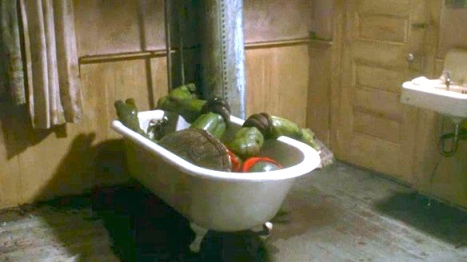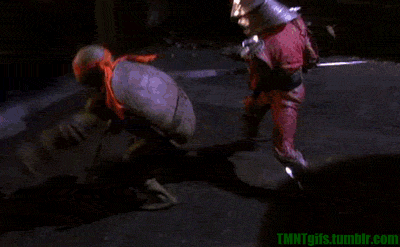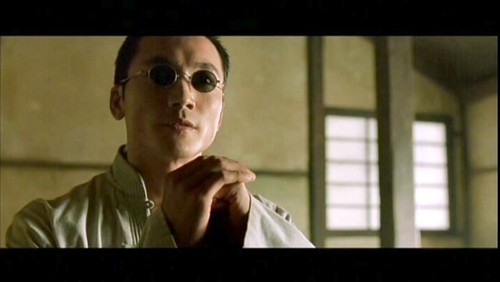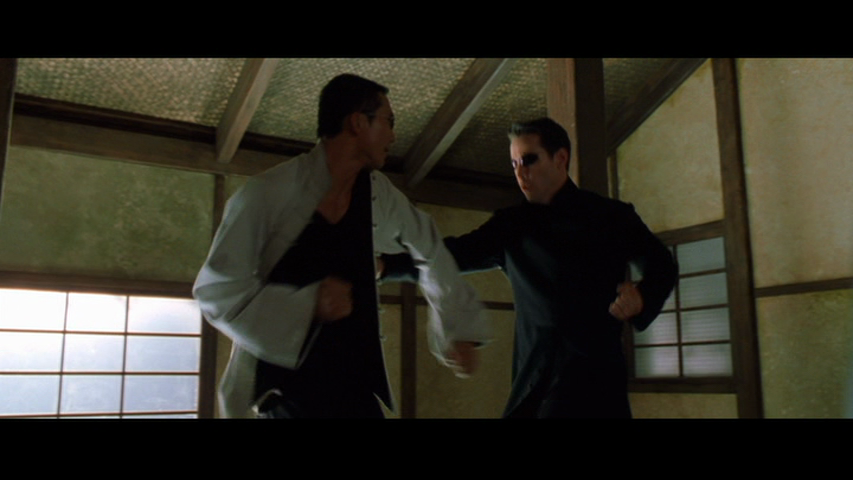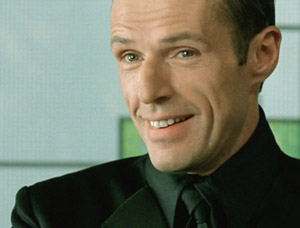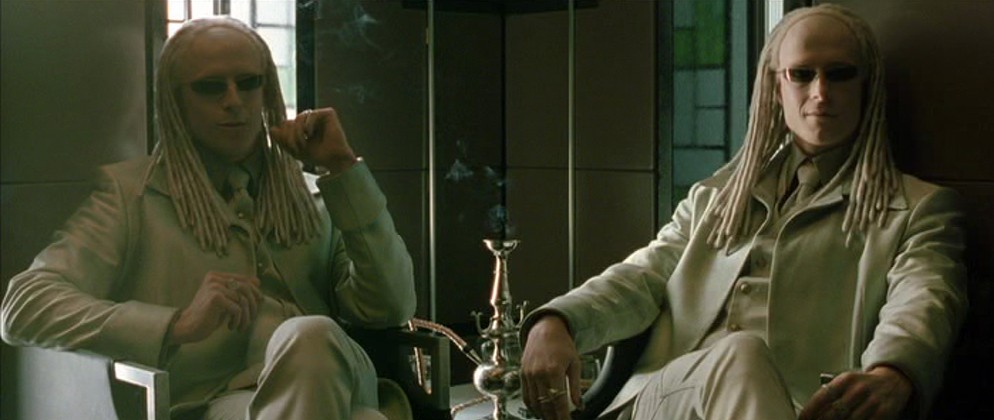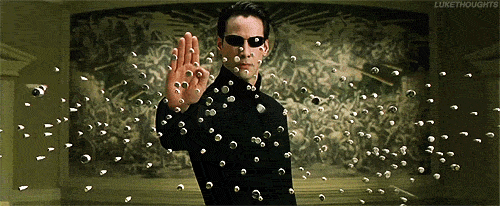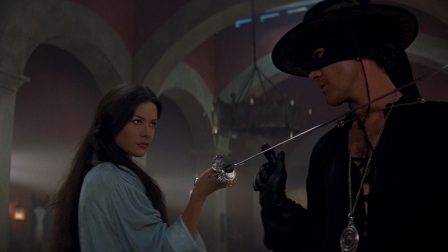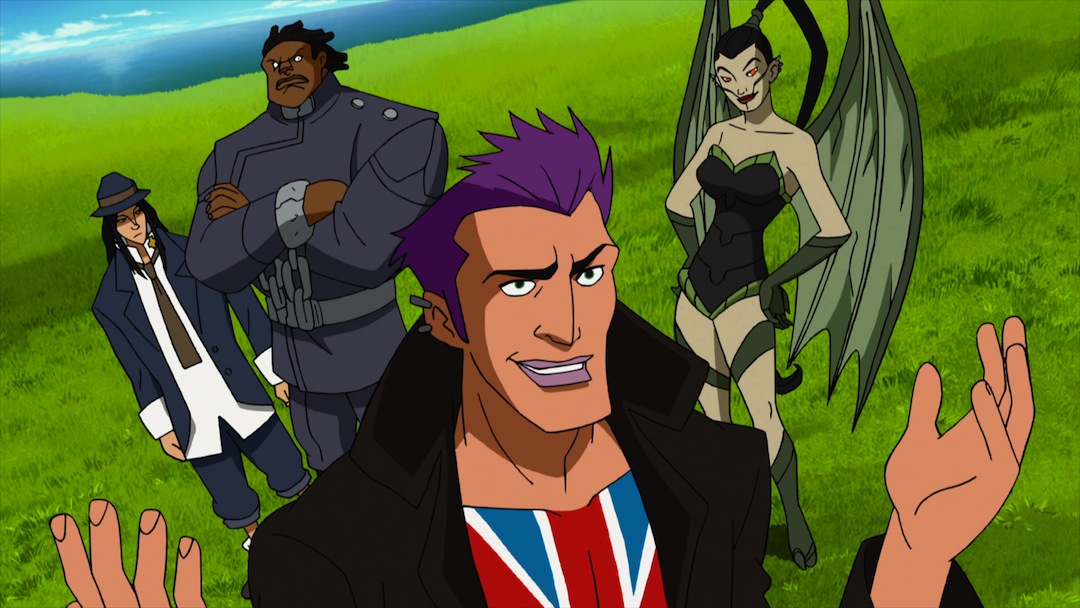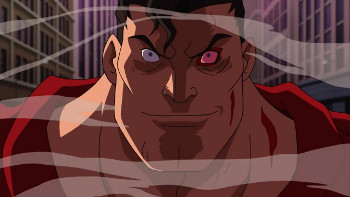I’m trying something new here today, an idea I’ve been kicking around.
A lot of great fights happen in movies that have just a handful (or even less) of actual fight scenes. But many movies are positively packed with fights, in fact often existing as little more than vehicles for them. In that case, going the usual route of breaking down every single last fight scene for this blog would get repetitive, tedious and exhausting– I can tell you that six entries apiece for both Crouching Tiger and Matrix Reloaded (at three entries each week, that’s two full weeks on just one subject) have already been quite a slog by the end.
If I did something like The Raid in that manner, we’d be here for a month. For such subjects I think it would be better to put away the microscope and take a more macro view, just a couple hundred words on each fight and move on.
However, that’s not what we’re doing today. Today we’ll be adding an extra twist, and reviewing an entire franchise that way. It sounds daunting, but given topics like the one here where each individual film is only built around one or two signature fights of a similar nature, it’s actually quite appropriate.
![]()
The Rocky movies are among the more celebrated and recognized in American popular culture, paradoxically symbolizing both a plucky underdog spirit and gluttonous self-indulgence. That’s largely due to how the series itself evolved over time, but throughout all the changes, each film still climaxes with Sylvester Stallone’s signature creation scoring a moral and/or practical victory over an implacable foe. While each fight is worthy of examination in its own right, they’re even more interesting in relation to each other.
[Note that we're only covering each movie's "main event," or climactic battle. In an entry already covering six different bouts, we don't need to pile on with run-ups like Rocky's early routing by Clubber Lang or Apollo getting murderlized by Ivan Drago. I'll also note that I know very little about actual professional boxing, but I do know enough to realize that anyone who absorbed as many head shots as Balboa did would have been reduced to eating crayons by 1982.]
1) Rocky Balboa vs Apollo Creed
“He doesn’t think it’s a damn show. He thinks it’s a damn fight!”
![]()
Rocky’s Foe: Apollo Creed, a fast-talking and financially shrewd champion, based loosely on Muhammad Ali. He picks Rocky, an obscure “ham & egger” fighter, for an exhibition bout in the Bicentennial as a sort of gag, after his slated opponent’s injury left an opening in Creed’s schedule. Played by Carl Weathers.
The Setup: The original Rocky is a different film than many remember. It is certainly cheesy and earnest, but it’s also not afraid to be raw, awkward and resfreshingly free of vanity. The title character’s low intelligence is alternately endearing & winceworthy, and the other characters have varying degrees of alarming emotional un-healthiness; tellingly, perhaps the most stable & responsible person Rocky knows is the loan shark he beats guys up for. Because the movie works so hard to find the good in characters you might not have otherwise noticed, their “victory” at the end is all the more touching and earned.
Rocky’s fight against Apollo Creed is, he comes to realize, not something he could genuinely win. Balboa decides to make his dignity where he can, and famously decides that if he can “go the distance” against Creed– last all 15 rounds, which no one has every done with the champ– then maybe he’s not such a nobody after all.
Adrian Watches From: She just stays in the locker room and listens, right up until the last round when she emerges in the hallway.
The Fight: It’s clear that Apollo isn’t taking this seriously at the start, dancing around and trash-talking Rocky. But the Italian Stallion puts him on notice soon enough with an uppercut that downs the champ for the first time in his career. He turns serious quite quickly and pummels the challenger about for the next two rounds, and although Rocky is mostly on the defensive he occasionally rallies back. It’s not until the end of round two that the music kicks in (this will be a running tactic for the series), signifying, as Martin Lawrence and/or Simon Pegg would say, that “stuff” just got real.
This movie does a weird gag with time, perhaps as another signal that it’s not the straight sports movie that the sequels would become: it pretty much cuts out the middle. After Round Two ends, the camera cuts to a series of shots of ring girls holding up cards to let us know time’s passing, and in the space of a few seconds we go from Round 3 to Round 5 to Round 9. Then a very brief scene as the fight continues, then we’re in the closing seconds of Round 13. Quite the whirlwind tour through the fight we waited the whole movie for.
![]()
Still, Rounds 14 and 15 play out beautifully. Both boxers are believably exhausted but still absorbing and dishing out brutal punishment. Rocky goes down for a nine-count in the fourteenth, getting up even against the advice of his own corner and to the very visible frustration of Apollo (Creed’s exasperated body language is perfect), still ready to throw some more fists. The Stallion’s eye is so swollen (both fighters are wearing enough physical trauma makeup to pass for the Toxic Avenger) that it has to be cut open so he can see, a procedure that’s more gruesome in concept than execution.
The fight ends as the clock runs out, both contenders on their feet but with Rocky throwing the final punches. Bill Conti’s signature music kicks in, and between it and the tearful reunion with Rocky and his ladylove Adrian, the announcer saying that the split decision went to Creed is nearly drowned out. And why not? Rocky already won his battle.
2) Rocky Balboa vs Apollo Creed (rematch)
“You’re goin’ down.”
“No way.”
![]()
Rocky’s Foe: Apollo Creed, once again. Embarrassed by his narrow victory over the “chump” Balboa, the image-conscious Apollo is determined to get a decisive victory over Rocky, even though the newly-married Italian Stallion would rather just retire. Still played by Carl Weathers, who might have won this fight if he’d remembered it’s all in the hips.
The Setup: Rocky II is a strange point in the franchise’s evolution. It’s not serious enough to be legitimately dramatic, yet it’s not silly enough to be genuinely entertaining. The very existence of the film can be chalked up to Stallone wanting to have his cake and eat it too, adding a physical victory to Rocky’s moral one.
Having been goaded into the rematch by Creed, Rocky and his manager Mickey (Burgess Meredith) undertook a more focused training mission this time around: in order to both protect his diminished right eye and throw the champ off his balance, Rocky has learned to fight right-handed rather than as his typical southpaw self. But will it be enough?
Adrian Watches From: Home, via television.
The Fight: In true sequel tradition, it’s like the first but more so. There are many smaller changes, however, like Apollo’s initial aggressiveness and vindictive fighting style (he begins loudly taunting Rocky and even winding up overly-telegraphed punches in order to embarrass Balboa), and the way Rocky is generally more on the losing end this time out. But the bare bones are still the same: Rocky is constantly soaking up damage while occasionally giving some spirited counters, the beginning & ending get the most focus, and by the finish both boxers are lumbering about exhausted– once again it’s Weathers with the more expressive body language, his arms flopping around like big wet noodles.
Thankfully there are some more stylistic changes (courtesy of Stallone, who picked up directorial duties from John G Avildsen for most of the remainder of the franchise), the most major one being that we actually get to see more of the middle of the fight. It still gets the least focus, naturally, but it’s much less rushed than before. Once the music kicks in at the end of Round Two (Conti’s score sounds heavily inspired by Holst’s “Mars”), the middle of the fight becomes a focused montage, with some nice POV and slow-motion shots. As this segment fades out, Rocky starts to put more of a dent in his opponent just before we return to the more “straight” filmmaking of the last two rounds.
![]()
Perhaps fittingly given he’s named after a Greek god, it’s Apollo’s hubris that causes his loss here. If he’d just pulled the ol’ stick-and-move for the last round, Creed’s general dominance of the fight would have made him a surefire winner by decision, but he didn’t want to win by decision– he wanted to destroy Rocky, the man who’d hurt him so badly. His insistence on trying to KO this immovable Italian leaves him open to devastating blows from the challenger, and one such punch sends Creed to the mat… along with Rocky, who trips and falls himself after putting so much strength into his final lunge.
There’s a gloriously cheesy slow-motion sequence as the two behemoths struggle to return to a standing position, knowing that whoever gets up is the winner. Just at the count of nine, Rocky is able pick himself up just as Apollo’s strength gives out and he stumbles back down. It’s corny, but on the other hand, it’s an admirably unorthodox way to end the fight, and hammers home (if a bit unsubtly) that Rocky’s main asset is his indomitable willpower and determination. Balboa gets up because he simply wants it more.
3) Rocky Balboa vs Clubber Lang
“I don’t hate Balboa. I pity the fool.”
![]()
Rocky’s Foe: James “Clubber” Lang, a vicious fighter with a wild personality. Played by the one and only Mr. T, in his film debut.
The Setup: In the years since winning the belt from Apollo, Rocky had gone soft as a fighter, leaving him easy pickings for the young & hungry contender Clubber Lang. In less than two rounds Lang delivered Rocky a humiliating defeat, and even worse, Lang’s rough-housing backstage induced a heart attack in the already-weakened Mickey, who died shortly after. Fortunately, the now-retired Apollo Creed (who also hates Lang) tracked down Rocky to help him get “the eye of the tiger” back.
Even more strategy than before is put into Rocky’s prep this time, as Creed’s training of Rocky emphasizes building his speed and agility. Creed also realizes that even Rocky’s stubborn durability is no match for Lang’s raw power, and he knows that Clubber has to be put down early. Curiously, the blind spot in Rocky’s right eye, discussed so much in the second film, is not mentioned here at all or ever again.
Adrian Watches From: The front row, finally.
The Fight: It’s most certainly different. Not only is the middle not skipped, but the fight is shown in its entirety, from beginning to end– a first (and last, basically) for the franchise. Aesthetically this also marks a new direction for the series in the way punches sound: before, they sounded more or less realistic, but here they sound more like “movie punches”– audible wallops like out of something like Indiana Jones.
Rocky’s new tactics are evident immediately. He’s faster and more aggressive, practically bouncy– Stallone, as always quite physically committed, really sells the character’s legwork. Rocky’s new agility is a great boon in the first round, as he dodges, ducks, dips, dives and dodges many of the new champ’s blows and keeps chipping away at Lang with many quick strikes of his own. Clubber is so infuriated at Rocky’s deft maneuvering that he has to be physically restrained (by several people) from attacking Rocky in-between rounds.
When Round Two begins things go bad for Rocky as he falls prey to several of the champ’s haymakers, but near the end he rallies, and intuits something that wasn’t part of Apollo’s plan: Lang’s bestial rage can be turned against him. Rocky continually taunts Lang in the third round, either ducking or absorbing many attempted knockout blows in a sort of modified rope-a-dope strategy until Clubber is worn out in a way he’s not used to. When the mohawked fighter is vulnerable enough, Rocky moves in for the kill and just deconstructs Lang with a flurry of blows that finally put him down for the count.
![]()
The Rocky III fight plays out very atypically for the series. It’s a sprint rather than a marathon, and makes Rocky use his brain in addition to his strength and willpower. It’s not the best of the series but it’s a refreshing change of pace.
(We never hear from Clubber Lang ever again after the end of this movie. A guy like that, I’m thinking there’s no way he doesn’t try to burn down Rocky’s house as revenge.)
4) Rocky Balboa vs Ivan Drago
“I must break you.”
![]()
Rocky’s Foe: Ivan Drago, a young Russian fighter sponsored by the Soviet Union, out to crush the decadent American fighters. Despite or perhaps because of his simplicity, Drago is an amazing character; with his toned physique, imposing size and rigid blonde hair, he’s more Super Saiyan than boxer. Played by Dolph Lundgren, who in reality is far more intelligent than the quiet beast he played.
The Setup: Rocky IV is arguably the culmination of the direction the franchise had taken, up until the fifth film anyway. Almost all internal conflict and character growth has been stripped away, resulting in a story of almost admirably primitive form. The film is almost nothing but bombast and emotions, wasting very little time between setpieces and gags. It also has a rep for being “propagandistic,” being a movie with a bad guy Russian at the height of the Cold War. And it certainly is, but not in the way many people think; the movie ends with some surprisingly optimistic messages about finding commonality with, and not pre-judging, our enemies. Even the cold-blooded villain is ultimately shown to have a form of honor, being exploited by his devious rulers.
For his first professional fight, Drago entered into an exhibition match with Apollo Creed, Rocky’s nemesis-turned-friend. Entering the match cocky about his chances against the Russian “amateur,” Apollo is ultimately beaten so bad within two rounds that he dies in the ring. Drago literally kills Rocky’s friend, so of course the Italian Stallion won’t let that stand. He flies to Russia himself and trains under harsh and simple conditions; the film goes out of its way to contrast Rocky’s mountain man regimen against Ivan’s closely-regulated training to sell a self-flattering message about Americans being more natural & humble whereas the Soviets rely on high-powered technology… which is funny, because the real-life Cold War was much closer to the opposite. Regardless, when Rocky shows up at the climactic fight, Stallone is clearly in the best shape of his life.
Adrian Watches From: Once again, she’s there at ringside, having flown all the way to Russia to be with her man.
The Fight: Insane. If anything it more closely resembles Rocky’s first fight or two in its barest structure, but with everything turned up to eleven. No semblance of strategy is apparent, nor was any ever discussed beforehand; this is nothing but force against unrelenting force, two chiseled gods dishing out more on-screen damage than anything outside of a Godzilla flick.
As with before we see the entirety of the first two rounds, with Rocky mostly just helpless until the end of Round Two (Ivan’s superior reach is another advantage over the Stallion), when he gets his first good blow in and cuts the Russian’s eye. Rocky even matches He-Man’s feats of strength with one of his own, ending one of the pair’s shoving matches by physically lifting up Drago and slamming him to the ground (good thing he practiced in the last movie against Hulk Hogan).
And also as before this is the part where the music kicks in, and all the “middle” rounds become an extended montage. A glorious montage: cinematically speaking this is probably the best match of the series. There’s slow-motion shots of the fighters withstanding devastating head blows, fade-ins of the fight over panning shots of the crowd, even split-screens showing the combatants staring each other down between rounds. And the punching sound effects seem twice as loud as they did in Rocky III. It’s over the top, bombastic and beautiful. More than in any other Rocky fight we get a real sense of the passage of time and the outright war these two titans are engaged in.
![]()
And over the course of things the crowd, admiring Rocky’s tenacity, improbably begins to cheer for him; even Drago is impressed, famously uttering, “He is not human. He is like a piece of iron.” The failure of the unstoppable force to crush the immovable object leads to Drago getting chewed out by his Soviet handlers just before the final round, and helps him re-discover his pride as a man who fights to win, not for others’ approval.
In the last moments Rocky takes some more abuse but comes back strong, hitting Drago with a series of blows that resemble nothing so much as cutting down an enormous tree. For the first time ever, the Russian colossus goes down, and goes down so hard he stumbles out of the ring while trying to get up. U-S-A! U-S-A!
[Pondering: all those Russians in the crowd who cheered for the American... it's pretty much guaranteed that the secret police dragged them out of their bed and shot them later, right? Ah, well, you know communism: can't make an omelet without breaking a few million peasants.]
5) Rocky Balboa vs Tommy Gunn
“My ring’s outside.”
![]()
Rocky’s Foe: Tommy, “The Machine” Gunn, a hotshot young boxer with a gratuitous nickname. Talented and full of potential, but also hotheaded, petty and short-sighted. Played by Tommy “The Duke” Morrison, a real-life boxer.
The Setup: Rocky V is the black sheep of the franchise, despised by nearly everyone including Stallone himself (who didn’t direct, returning the reins to Avildsen). It’s an ambitious attempt to settle the series; indeed, it’s possible a good movie could have been made off a story where Rocky retires for good, is forced to live under humble circumstances, and his family life suffers while he tries to live vicariously through a protege… and the whole thing ends not in a ring but in a gritty street fight. But the execution is thoroughly lousy, and painful to watch.
A brain-damaged (turns out Drago rang his clock but good) and impoverished Rocky spent a good chunk of the film tutoring Gunn, but Gunn eventually falls under the sway of George W Duke, an amoral fight promoter based loosely on Don King (who himself is more nasty than most Hollywood villains). Duke turns Gunn against Rocky and soon gets him a shot at the Heavyweight Championship. Gunn wins the title but finds himself still not being taken seriously, due to the public’s remaining goodwill for Balboa and the fact that Gunn only won against an inferior champion. Also, he has the most hateable face this side of Fred Durst:
![]()
Seeing that the only way to win respect is to get a match against a returning Rocky, Gunn and Duke confront and harass Rocky at his favorite bar, accompanied by a video crew. Balboa tries to be the bigger man and brush it off, but when Gunn roughs up Paulie, Rocky takes it personally, and challenges him to a fight right there.
Adrian Watches From: She’s at home when it starts actually, but when the fight somehow makes the TV news (?), their son Robert pulls her out to watch in person.
The Fight: Like much of Rocky V, it’s definitely different… but not all that great.
The staging is technically good, with a lot of nice flourishes to indicate that this really is a street fight, not just bare-knuckle boxing that happens to take place on a street. The two combatants knock each other into things, trip each other, grab each other’s arms and generally behave in ways that would be illegal and/or impossible in a genuine boxing match.
However, it’s written terribly. Tommy is portrayed as such an unworthy opponent that nearly every time he hits Rocky, it’s either a sucker punch (Rocky turns his back and walks away twice because he doesn’t want to hurt Tommy, who he still cares about, any more), or a follow-up to a sucker punch; it’s not until the very end, when they’re both simply trading blows, does Tommy score a hit that’s not a complete cheap shot. All of Rocky’s rivals thus far had been varying degrees of villainous, but the movie still respected their abilities. Here, Tommy is portrayed as the ultimate sniveling dirtbag, presumably as an effort to puff up the character of Rocky.
![]()
It’s hard to find images from this fight, so I used a better one from Rocky IV. You’re welcome.
And the Rocky himself does come off fairly well, he being the one that pulls off most the fancier moves. It’s Stallone’s physicality that sells the fight to be as exciting as it is. But that excitement doesn’t save it from Gunn’s aforementioned dickishness, and definitely not from the colossal miscalculation of the moment where Rocky, coming from a seemingly final beating at Tommy’s dishonorable hands (inspired by a brain-damage-induced vision of Mickey’s ghost!), rises to his feet to the tune of the opening notes of Bill Conti’s iconic “Gonna Fly Now.” It’s very corny and cynically so, not in a way at all appropriate to the series. It’s a wonder test audiences didn’t laugh it out of existence.
Anyway, Rocky finally rallies and puts Tommy down for the count. He even punches a sneering Duke for good measure, despite the latter’s repeated warning of “touch me and I’ll sue!” to which finally replies “sue me for what?” after decking him. To which you’re tempted to answer “uh, for assault?” but I suppose Rocky means he has no money for Duke to take. I… really don’t think it works that way. Anyway, the exchange is definitely a poor man’s “Diplomatic immunity!”/”It’s been revoked.”
6) Rocky Balboa vs Mason Dixon
“You’re one crazy old man.”
“You’ll get there.”
![]()
Rocky’s Foe: Mason “The Line” Dixon, a young champion who always KOs his opponents quickly, causing many to suspect he doesn’t have the staying power to last in a sustained fight; this creates an interesting contrast to the original film, because his own struggle is the question of whether or not he can “go the distance.” Dixon probably received more screen time than any of Rocky’s other rivals did, to the point where he’s practically a co-protagonist in the film. Played by Antonio Tarver, another real-life boxing champion.
The Setup: Rocky Balboa (the movie, not the character) basically amounts to Stallone giving himself a Mulligan on ending his signature franchise. Surprisingly, the public at large was generally receptive to it, possibly because they were almost as eager to a better sendoff than Rocky V as he was. This one is more like the original than any film since Rocky II, returning the character to a position of more genuine humility. But it’s modern, too, and cognizant of its own mythology in a way that’s rarely annoying.
The impetus for the film’s unlikely fight is that boxing number-crunchers have concluded that the current champ Dixon would lose out to the legendary Balboa, if the two had ever fought under equitable conditions. A retired fighter against one in his prime is hardly “equitable,” but nonetheless the conclusion hurts Dixon’s besieged pride and similarly gives Rocky, who is stable yet adrift a few years after Adrian’s death, a renewed sense of purpose. An exhibition match between the two provides Mason an opportunity to prove he can handle the long slog, and Rocky a way to exorcise his personal demons. It’s absurd, but the movie plays things in such a way that you actually believe it.
The training sequence, overseen by series mainstay Tony “Duke” Evers (Tony Burton), explicitly acknowledges that Rocky’s age handicaps his speed and agility, so he’ll have to focus mainly into improving the strength of his punches. “Let’s start buildin’ some hurtin’ bombs,” Burton rasps out, awesomely.
Adrian Watches From: Heaven.
The Fight: Fitting in with the movie as a whole, the fight is a mix of the old with the new. Right off the bat you can see plenty of modern touches: everything is brighter & sharper, the fight’s timer occasionally appears on the screen, the announcers occasionally count the punches in their commentary. Stylistically, Stallone throws in a few curveballs as well, the most notable being the occasional and striking, if somewhat inexplicable, switches to black & white (with a few lone highlighted colors) cinematography. During the now-expected “middle montage” Rocky flashes back briefly to memories of Adrian and Mickey. Notably, the crushing audio accompaniment of the fighters’ punches has been dialed way back from the Rocky III/IV levels.
But much is the same as before, too. As per tradition, we see the first two rounds in full before the music perks up as Rocky re-asserts himself at the end of Round Two, and then gliding on that stylized journey to the fight’s last legs. There’s perhaps more suspense than usual this time, with a few minutes in the second round almost coming off like what would really happen in a situation like this, but Rocky’s resilience plus Dixon injuring his dominant hand on Rocky’s hip (Stallone seemed to realize that even Rocky would need an inadvertent handicap, considering his age) let the Stallion slowly climb his way out of the hole, even scoring an early knockdown against his opponent.
![]()
As we approach that last round (ten this time, not fifteen like before), the “last round of your life!” Paulie calls out from the corner, the two acknowledge some respect for each other before finishing their battle. In the ensuing struggle, Rocky is knocked down to one knee and, in another break from tradition, time slows from his perspective and we hear a brief internal monologue from this legendary character, urging himself to finish on his own terms the journey he began decades ago:
It ain’t about how hard you hit, it’s about how you can get hit and keep moving forward. How much you can take and keep moving forward. GET UP!
Rocky wills himself to stand and trades more blows with Dixon. As the final bell rings, both fighters are on their feet, with Rocky having gotten in the last punch. In the ensuing pandemonium Dixon hears the one thing he needed to hear, from the only man who could say it, when Rocky tells him “you’re a great champion.”
Things have come full circle because it’s a split decision again, with Rocky narrowly losing. But as before, it doesn’t matter to him because he’s won his own victory, and the Italian Stallion leaves the arena for the last time, to the screams of adoring fans. No regrets.
Series Overview: Phew, that was quite an undertaking. Alas I couldn’t find an appropriate place to fit in this image, so I’ll do so now.
![]()
They just look so happy!
You may have noticed there are no grades at the end of any fights, as I did not feel it would be useful or appropriate. With the exception of Rocky V most of them would be in the “A” range anyway, and besides many of them are going for different effects; the fights of the first and fourth movies (not to mention the films themselves) are practically in different universes. So I’ve decided that when faced with a conundrum like this in a retrospective, the best thing is to rank the fights in order of personal preference. In which case:
- Rocky
- Rocky IV
- Rocky Balboa
- Rocky III
- Rocky II
- Rocky V
It took over 4500 words, but yo Adrian, I did it.
Recommended Links: Fun fact about Rocky IV: literally one-third of it is montages. Speaking of Rocky IV, check the first entry on this list for an amazing story about one of its stars.
Imagine what it would be like if Mr. T were on Twitter– in fact, imagine the best possible version of that. You will be pleased to find that that’s EXACTLY what it’s like. Go ahead and follow good old Sylvester himself while you’re at it.
You know which other big star is on Twitter and was deeply connected to the Rocky franchise? You guessed it: Frank Stallone.
Coming Attractions: A different type of highlander.
![]()
You’re welcome, ladies.
Tagged:
boxing,
one-on-one,
Rocky,
You guessed it Frank Stallone ![]()
![]()
